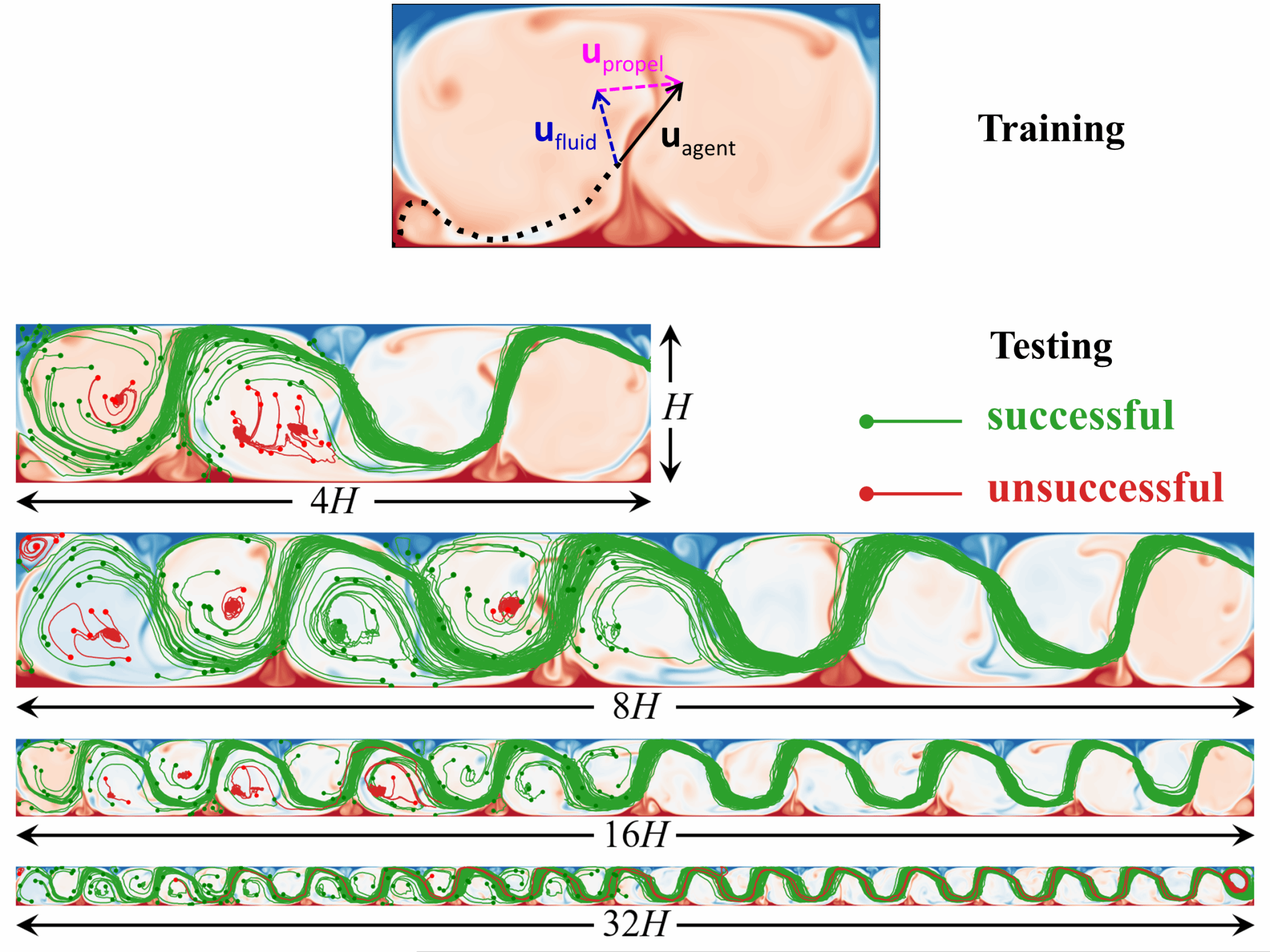Planning energy-efficient trajectories can be beneficial for unmanned aerial vehicles to increase their endurance. Inspired by birds to utilize warm rising atmospheric currents, scientists have been controlling flying vehicles to utilize the updrafts of thermals to increase endurance and save energy. Researchers from Northwestern Polytechnical University (Ao Xu, Hua-Lin Wu, and Heng-Dong Xi) designed a smart self-propelling agent that can migrate long-distance in a thermal turbulent environment. They choose the Rayleigh-Bénard convection, which is a paradigmatic turbulent convection system, as the flow environment. Using the machine learning algorithm, the team trained the agent in the Rayleigh-Bénard convection cell with an aspect ratio between cell length can cell height of 2, and then test the smart agent migrating in the convection cell with an aspect ratio up to 32. Despite complex flow features that arise in a large-aspect-ratio cell, such as less stable circulation rolls and increased flow velocity fluctuation, the trained smart agent can still successfully identify energy-efficient trajectories. This work has implications for the flying vehicles patrolling in the convective layer of the atmosphere, in which energy-efficient trajectories can increase endurance and cover a wider range.


Ao Xu*; Hua-Lin Wu; Heng-Dong Xi. Long-distance migration with minimal energy consumption in a thermal turbulent environment. Physical Review Fluids 2023, 8 (2), 023502. DOI: 10.1103/PhysRevFluids.8.023502
